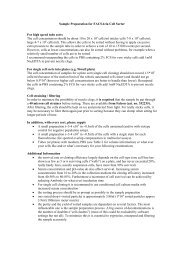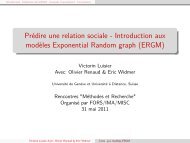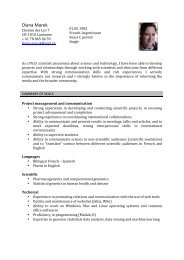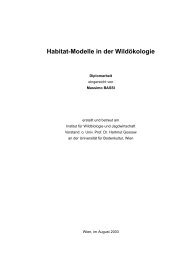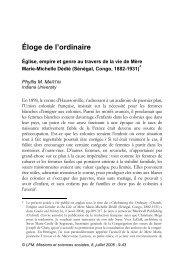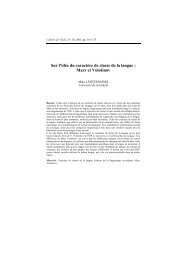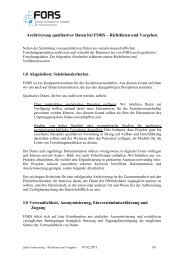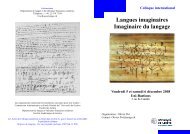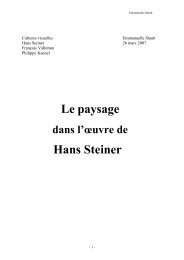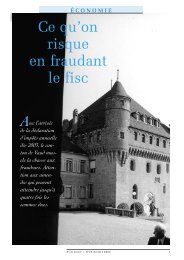conference programme book - European Survey Research ...
conference programme book - European Survey Research ...
conference programme book - European Survey Research ...
Create successful ePaper yourself
Turn your PDF publications into a flip-book with our unique Google optimized e-Paper software.
FRIDAY 22 JULY 185been convincingly addressed. To compensate for distorons produced by online surveys, weighng oen isseen as a promising correcve soluon. However, the impacts of this technique are controversial since findingsfrom previous research are ambiguous at best (e.g. Taylor 2005; Malhotra&Krosnick 2007). The demonstraon proposed in his paper rests on a two-step approach, using the GermanLongitudinal Elecon Study (hp://www.dgfw.info/gles.php?lang=en) since this data source offers the opportunityto test the impact of different weighng schemes on models of party choice and turnout...4.15.2 Imputaon Models in Panel <strong>Survey</strong>s: Is Weighng for Sampling Design and Unit Non-ResponseImportant? (with Che Nicole)L. Fumagalli 11 University of Essex, United KingdomIn this paper we consider for the first me a study to evaluate whether imputaon models in panel surveysshould use weights to correct for unit non-response and sampling design. Using the Brish Household Panel<strong>Survey</strong> (BHPS), we find that weighng does not seem important when unit and item non-response rates areas low as in the BHPS. On the contrary, when we simulate a doubling of the arion and item non-responserates, we find stascally significant differences between earnings computed using weighted and unweightedimputaon. Although stascally significant, these differences do not seem huge. Hence, the substanalimportance of weights remains sll disputable.4.15.3 Propensity Score Adjustment for a Web-panelG. Wiegand 1 , B. Hulliger 11 University of Applied Sciences Northwestern Switzerland (FHNW), SwitzerlandWhen conducng surveys via the Internet to esmate populaoncharacteriscs one can expect a bias for different reasons. Besides all the typical bias inducingmechanisms found in any survey mode web surveys are suscepble to undercoveragesince the Internet penetraon of the populaon is not exhausve. The bias potenal is even aggravated whena panel of respondents is recruited to be surveyed on several occasions via the web.One way to reduce bias is to apply Propensity Scores Adjustment (PSA). The basic idea is to esmate theresponse propensity with respect to some covariates. To do so allows the deducon ofweights to reduce the bias of a survey. The praccal problem is to idenfy suitablecovariates and to find a good model for the response behavior.4.15.4 Assessing the problem of selecon bias and solving it through weighng - an analysis of selectedWageIndicator countriesS. Steinmetz 1 , P. de Pedraza 3 , D. Raess 2 , K. Tijdens 41 University of Amsterdam, Netherlands; 2 University of Geneva, Switzerland; 3 Universidad de Salamanca,Spain; 4 Erasmus University, NetherlandsThe increasing popularity of web surveys triggered a heated debate about the quality of web surveys for scienficuse. The most obvious disadvantage of web surveys is that they may not be representave becausethe sub-populaon with Internet access is quite specific. Therefore, different weighng techniques, like poststraficaonand propensity score adjustment (PSA) have been proposed, parcularly with regard to nonprobability-basedweb surveys. As parcularly PSA has not been applied tradionally in the field of surveys,the implicaons of these methods sll need to be studied more extensively.4.16 Usability of Web-Based <strong>Survey</strong>s IITo be held on July 22, 2011 from: 11:00 to 12:30, in room 315.Coordinated by: Caroline Jarre - Effortmark Limited, United Kingdom



